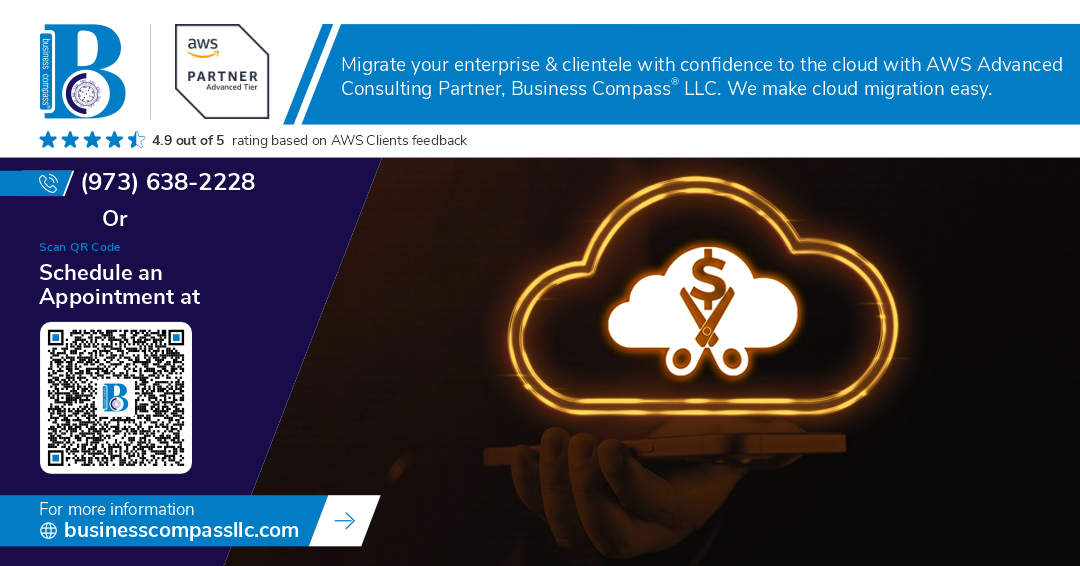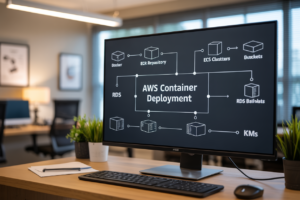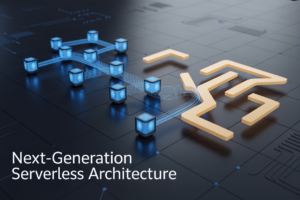Have you ever felt overwhelmed by the sheer number of AWS compute services and their complex pricing structures? 🤯 You’re not alone. Many developers and businesses struggle to navigate the maze of options and determine the most cost-effective solution for their needs.
Enter the world of AWS compute pricing – a realm where understanding the nuances can make or break your budget. From the versatile EC2 instances to the serverless magic of Lambda, and from the container-centric Fargate to the orchestration prowess of ECS and EKS, each service comes with its own pricing model. But fear not! We’re about to embark on a journey that will demystify these pricing structures and empower you to make informed decisions.
In this comprehensive guide, we’ll dive deep into the pricing models of EC2, Lambda, Fargate, ECS, and EKS. We’ll compare their costs, explore optimization strategies, and introduce you to tools that can help manage your AWS expenses. Whether you’re a startup looking to minimize costs or an enterprise aiming to optimize cloud spending, this blog post will equip you with the knowledge to navigate AWS compute pricing like a pro. Let’s get started! 💪💻
Overview of AWS Compute Services
A. EC2: Flexible virtual servers
EC2 (Elastic Compute Cloud) is AWS’s flagship compute service, offering scalable virtual servers. These instances provide complete control over the computing environment, allowing users to choose from various instance types optimized for different workloads.
Key features of EC2 include:
- Customizable instance types (CPU, memory, storage)
- Pay-per-use pricing model
- Ability to run any operating system or application
- Integration with other AWS services
| EC2 Instance Type | Use Case | Typical Workloads |
|---|---|---|
| General Purpose | Balanced | Web servers, small databases |
| Compute Optimized | CPU-intensive | Batch processing, scientific modeling |
| Memory Optimized | Large datasets | In-memory databases, real-time analytics |
| Storage Optimized | High I/O | Data warehousing, distributed file systems |
B. Lambda: Serverless functions
Lambda is AWS’s serverless compute service, allowing users to run code without provisioning or managing servers. It automatically scales based on incoming requests and charges only for the compute time consumed.
Benefits of Lambda:
- Zero server management
- Automatic scaling
- Pay-per-execution model
- Supports multiple programming languages
C. Fargate: Serverless containers
Fargate is a serverless compute engine for containers, eliminating the need to manage the underlying infrastructure. It works with both Amazon ECS and EKS, providing a flexible and scalable solution for running containerized applications.
D. ECS: Managed container orchestration
Amazon Elastic Container Service (ECS) is a fully managed container orchestration service. It simplifies the deployment, management, and scaling of containerized applications.
E. EKS: Managed Kubernetes
Amazon Elastic Kubernetes Service (EKS) is a managed Kubernetes service, making it easy to run Kubernetes on AWS without needing to install and operate your own Kubernetes control plane.
Now that we’ve covered the overview of AWS compute services, let’s dive into the specific pricing models for each, starting with EC2.
EC2 Pricing Model
A. On-demand instances
On-demand instances offer the most flexibility in EC2 pricing, allowing users to pay for compute capacity by the second with no long-term commitments. This pricing model is ideal for applications with unpredictable workloads or short-term projects.
Key features of on-demand instances:
- No upfront costs
- No minimum contract
- Pay only for what you use
- Ideal for spiky or unpredictable workloads
| Instance Type | Linux/Unix (per hour) | Windows (per hour) |
|---|---|---|
| t3.micro | $0.0104 | $0.0182 |
| c5.large | $0.085 | $0.156 |
| m5.xlarge | $0.192 | $0.336 |
B. Reserved instances
Reserved instances provide significant discounts compared to on-demand pricing when you commit to a specific instance type for a 1 or 3-year term. This option is best for applications with steady-state usage.
Benefits of reserved instances:
- Up to 72% discount compared to on-demand
- Capacity reservation in specific Availability Zones
- Flexibility to change instance family, OS, or tenancy
C. Spot instances
Spot instances allow you to request spare EC2 capacity at steep discounts, often up to 90% off on-demand prices. However, these instances can be interrupted with short notice when EC2 needs the capacity back.
Characteristics of spot instances:
- Largest discount among EC2 pricing options
- Ideal for fault-tolerant, flexible workloads
- Can be combined with on-demand or reserved instances
D. Savings plans
Savings plans offer flexibility similar to reserved instances but with a simpler purchasing process. You commit to a consistent amount of compute usage (measured in $/hour) for a 1 or 3-year term.
Advantages of savings plans:
- Up to 72% savings on EC2, Fargate, and Lambda
- Automatically applies to eligible usage across regions
- No need to manage individual reserved instances
Now that we’ve covered the various EC2 pricing models, let’s explore how Lambda pricing differs in its approach to serverless computing.
Lambda Pricing Breakdown
A. Per-invocation charges
Lambda pricing is based on two main components, with per-invocation charges being one of them. AWS charges $0.20 per 1 million requests, which means you pay $0.0000002 per individual function invocation. This pricing model is advantageous for applications with sporadic or unpredictable usage patterns.
| Invocations | Cost |
|---|---|
| 1 million | $0.20 |
| 10 million | $2.00 |
| 100 million | $20.00 |
It’s important to note that these charges apply regardless of the function’s execution time or memory allocation.
B. Compute duration costs
The second component of Lambda pricing is compute duration. AWS charges based on the amount of memory you allocate to your function and the time it takes to execute. The pricing is calculated in 1ms increments, with a 100ms minimum per invocation.
- $0.0000166667 for every GB-second used
- Charged in 1ms increments after the first 100ms
For example, if you have a function that uses 512MB of memory and runs for 200ms:
- Memory: 512MB = 0.5GB
- Duration: 200ms = 0.2 seconds
- GB-seconds: 0.5GB * 0.2s = 0.1 GB-seconds
- Cost: 0.1 * $0.0000166667 = $0.00000166667
C. Free tier benefits
AWS offers a generous free tier for Lambda, which includes:
- 1 million free requests per month
- 400,000 GB-seconds of compute time per month
This free tier is particularly beneficial for:
- Small-scale applications
- Testing and development environments
- Startups and individual developers
By leveraging the free tier effectively, you can significantly reduce your Lambda costs, especially during the initial stages of your project or for low-traffic applications.
Fargate Cost Structure
A. vCPU pricing
AWS Fargate’s vCPU pricing is based on the amount of compute power you allocate to your tasks. The cost is calculated per second, with a minimum of 1 minute. This granular pricing model allows for better cost control and optimization.
| vCPU Configuration | Price per hour (US East) |
|---|---|
| 0.25 vCPU | $0.01148 |
| 0.5 vCPU | $0.02296 |
| 1 vCPU | $0.04591 |
| 2 vCPU | $0.09182 |
| 4 vCPU | $0.18364 |
B. Memory pricing
Similar to vCPU pricing, Fargate’s memory pricing is also charged per second with a 1-minute minimum. The cost depends on the amount of memory allocated to your tasks.
- Memory is priced at $0.004045 per GB-hour in the US East region
- You can allocate memory in 1GB increments
- The memory-to-CPU ratio must be within the supported range
C. Storage pricing
Fargate includes 20 GB of ephemeral storage for free. Additional storage is charged separately:
- $0.000111 per GB-hour for ephemeral storage beyond 20 GB
- Persistent storage options like EFS or EBS can be attached, with separate pricing
When using Fargate, it’s crucial to right-size your tasks to avoid overprovisioning resources. Monitor your application’s performance and adjust vCPU and memory allocations accordingly to optimize costs. Next, we’ll explore ECS pricing considerations, which can provide additional flexibility for container orchestration.
ECS Pricing Considerations
EC2 launch type costs
When using Amazon ECS with the EC2 launch type, you’ll incur costs primarily for the EC2 instances that host your containers. Here’s a breakdown of the main cost components:
-
EC2 instance costs:
- On-demand instances
- Reserved instances
- Spot instances
-
EBS storage costs:
- General Purpose SSD (gp2/gp3)
- Provisioned IOPS SSD (io1/io2)
- Throughput Optimized HDD (st1)
| Instance Type | On-Demand Price/Hour | 1-Year RI Price/Hour | 3-Year RI Price/Hour |
|---|---|---|---|
| t3.micro | $0.0104 | $0.0069 | $0.0052 |
| c5.large | $0.085 | $0.0566 | $0.0425 |
| m5.xlarge | $0.192 | $0.1279 | $0.0961 |
Fargate launch type costs
Fargate pricing is based on the vCPU and memory resources used by your containers. Key points to consider:
- Per-second billing with a 1-minute minimum
- Separate charges for vCPU and memory
- No need to manage underlying EC2 instances
Additional ECS-specific charges
While ECS itself is free to use, there are associated costs to be aware of:
-
Data transfer costs:
- Inbound data transfer (usually free)
- Outbound data transfer (charged per GB)
-
Load Balancer costs:
- Application Load Balancer
- Network Load Balancer
-
CloudWatch monitoring:
- Basic monitoring (free)
- Detailed monitoring (additional cost)
Now that we’ve covered ECS pricing considerations, let’s explore the pricing factors for Amazon EKS in the next section.
EKS Pricing Factors
Control plane charges
Amazon EKS (Elastic Kubernetes Service) pricing consists of several components, starting with control plane charges. These charges are applied on a per-cluster basis and are billed hourly.
- Control plane cost: $0.10 per hour
- Monthly cost: Approximately $73 (based on 730 hours)
The control plane manages the overall health and functionality of your Kubernetes cluster, including:
- API server
- Scheduler
- Controller manager
- etcd (distributed key-value store)
| Control Plane Component | Function |
|---|---|
| API server | Handles cluster communication |
| Scheduler | Assigns pods to nodes |
| Controller manager | Maintains desired state |
| etcd | Stores cluster configuration |
Worker node costs
Worker node costs in EKS are primarily based on the underlying EC2 instances used. Factors affecting worker node pricing include:
- Instance type
- Region
- Operating system
- Purchasing option (On-Demand, Reserved, or Spot)
To optimize costs, consider using:
- Spot instances for non-critical workloads
- Right-sized instances for your applications
- Auto-scaling to match demand
Data transfer fees
Data transfer costs in EKS can significantly impact overall expenses. Key considerations include:
- Inbound data transfer: Generally free
- Outbound data transfer: Charged based on volume and destination
- Inter-AZ transfer: Incurs additional costs
To manage data transfer costs effectively:
- Use the same Availability Zone for related resources
- Implement data compression techniques
- Utilize AWS Direct Connect for frequent large data transfers
Now that we’ve covered EKS pricing factors, let’s compare pricing across different AWS compute services to help you make informed decisions for your infrastructure needs.
Comparing Pricing Across Services
Use case scenarios
When comparing pricing across AWS compute services, it’s crucial to consider various use case scenarios. Different services excel in different situations, impacting both performance and cost-effectiveness.
| Service | Best Use Case | Cost Efficiency |
|---|---|---|
| EC2 | Long-running, predictable workloads | High for steady-state applications |
| Lambda | Short-lived, event-driven tasks | Excellent for sporadic, bursty workloads |
| Fargate | Containerized apps with variable load | Good balance of flexibility and management |
| ECS | Large-scale container orchestration | Cost-effective for high-density deployments |
| EKS | Complex, multi-container applications | Optimal for extensive Kubernetes ecosystems |
Performance vs. cost trade-offs
When evaluating AWS compute services, it’s essential to balance performance with cost:
- EC2 offers the highest level of control but requires more management overhead
- Lambda provides excellent scalability with minimal management but may incur higher costs for constant high-traffic scenarios
- Fargate strikes a balance between performance and ease of use, ideal for variable workloads
- ECS and EKS offer powerful container orchestration but differ in complexity and associated costs
Scalability considerations
Scalability is a critical factor in choosing the right AWS compute service:
- EC2: Manual or auto-scaling groups
- Lambda: Automatic scaling with concurrent executions
- Fargate: Easy scaling of containers without managing infrastructure
- ECS: Flexible scaling options for container-based applications
- EKS: Complex but highly scalable for large Kubernetes deployments
Management overhead
The level of management required varies significantly across AWS compute services, impacting overall costs:
- EC2: Highest management overhead, requiring OS updates, security patches, and capacity planning
- Lambda: Minimal management, focusing solely on function code and configuration
- Fargate: Reduced overhead compared to EC2, with AWS managing the underlying infrastructure
- ECS: Moderate management, requiring cluster configuration and task definitions
- EKS: Highest complexity, but offers powerful tools for large-scale container management
Now that we’ve compared the pricing aspects across different AWS compute services, let’s explore some strategies for optimizing costs in these environments.
Cost Optimization Strategies
A. Right-sizing resources
Right-sizing is a crucial strategy for optimizing AWS compute costs. It involves selecting the most appropriate instance types and sizes for your workloads. To effectively right-size your resources:
- Analyze performance metrics
- Identify underutilized resources
- Adjust instance types and sizes
- Continuously monitor and optimize
| Instance Type | vCPUs | Memory (GiB) | Use Case |
|---|---|---|---|
| t3.micro | 2 | 1 | Low-traffic web servers |
| c5.large | 2 | 4 | Compute-intensive workloads |
| r5.xlarge | 4 | 32 | Memory-intensive applications |
B. Leveraging spot instances and savings plans
Spot instances and savings plans can significantly reduce your AWS compute costs. Spot instances offer steep discounts compared to On-Demand pricing, while savings plans provide flexibility and cost savings for consistent usage.
- Spot Instances: Ideal for fault-tolerant, flexible workloads
- Savings Plans: Commit to consistent usage for discounted rates
C. Implementing auto-scaling
Auto-scaling helps optimize costs by automatically adjusting resources based on demand. This ensures you’re not over-provisioning during low-traffic periods or under-provisioning during peak times.
Key benefits of auto-scaling:
- Improved resource utilization
- Cost reduction during off-peak hours
- Enhanced application performance
D. Monitoring and analyzing usage patterns
Regularly monitoring and analyzing your AWS usage patterns is essential for identifying cost-saving opportunities. Use AWS Cost Explorer and CloudWatch to gain insights into your resource utilization and spending trends.
Now that we’ve covered these cost optimization strategies, let’s explore the various tools AWS offers for effective cost management.
Tools for AWS Cost Management
AWS Cost Explorer
AWS Cost Explorer is a powerful tool that provides detailed insights into your AWS spending patterns. It offers:
- Interactive visualizations of your cost and usage data
- Customizable reports for in-depth analysis
- Forecasting capabilities to predict future costs
Here’s a comparison of key features:
| Feature | Description |
|---|---|
| Cost Breakdown | View costs by service, region, or tag |
| Usage Analysis | Analyze resource utilization patterns |
| Forecasting | Predict future costs based on historical data |
| Savings Plans | Recommendations for cost-effective commitments |
AWS Budgets
AWS Budgets allows you to set custom budgets and receive alerts when costs exceed predefined thresholds. Key benefits include:
- Proactive cost management
- Customizable budget types (cost, usage, reservation, savings plans)
- Automated actions to control spending
AWS Pricing Calculator
The AWS Pricing Calculator helps estimate costs for various AWS services. It enables you to:
- Create detailed cost estimates for complex architectures
- Compare different pricing models and instance types
- Export estimates for budgeting and planning purposes
Third-party cost optimization tools
Several third-party tools complement AWS native offerings, providing:
- Multi-cloud cost management
- Advanced analytics and reporting
- Automated cost optimization recommendations
These tools often integrate with AWS services, offering a comprehensive view of your cloud spending across different platforms.
Now that we’ve explored various cost management tools, let’s look at some effective strategies for optimizing your AWS compute costs.
AWS offers a diverse range of compute services, each with its unique pricing model and cost considerations. From the traditional EC2 instances to serverless Lambda functions, container-based Fargate and ECS, and the managed Kubernetes service EKS, organizations have multiple options to choose from based on their specific needs and budget constraints.
When selecting the right compute service for your workload, it’s crucial to consider factors such as usage patterns, scalability requirements, and operational overhead. Leveraging cost optimization strategies and utilizing AWS cost management tools can help you make informed decisions and keep your cloud expenses in check. By carefully evaluating and comparing the pricing models of different AWS compute services, you can strike the right balance between performance, flexibility, and cost-effectiveness for your applications.




















